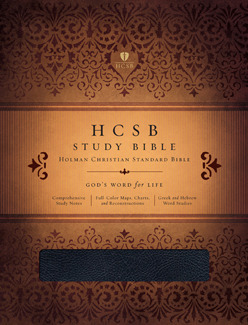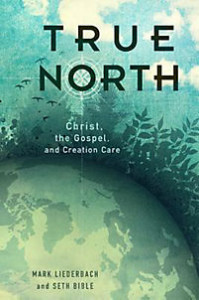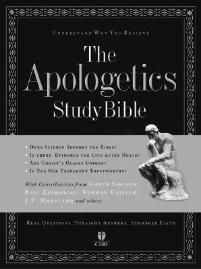Thom S. Rainer's Blog, page 361
January 20, 2013
Pray for Cuyahoga Valley Church
Location: Broadview Heights, Ohio
Senior Pastor: Chad Allen
Founding Pastor: Rick Duncan
Worship Times: Sat. 5:30 PM Eastern Time; Sunday 9:00 AM, 10:30 AM & 12:00 PM Eastern Time; Sunday 7:07 PM Eastern Time
Fast Facts: Cuyahoga Valley Church was founded twenty-five years ago under the oversight of Pastor Rick Duncan and is currently transitioning pastoral roles from Pastor Rick to the new senior pastor, Chad Allen. Please pray for this pastoral transition and the rest of the church as they continue their ministry to the Cleveland area and the world.
Website: www.cvconline.org
“Pray for . . .” is the Sunday blog series at ThomRainer.com. We encourage you to pray for these churches noted every Sunday. Please feel free to comment that you are praying as well. If you would like your church to be featured in “Pray for . . .” contact Steve Drake, director of pastoral relations, at Steve.Drake@LifeWay.com.
January 19, 2013
Ten Things Pastors Desire in a Church Member
I was surprised at the stir created by my blogpost earlier this week, “Ten Things Church Members Desire in a Pastor.” When I did the initial survey and wrote an article on it, I viewed it as just a fun exercise that would get minimal attention. I was wrong. The article hit a nerve.
One of the many commenters suggested I conduct a similar exercise and find out what pastors desire in a church member. I took that as a friendly and helpful suggestion. As a result, I interviewed 23 pastors with a simple and open-ended question, “What do you desire in church member?” The pastors could respond with an unlimited number of desires, but most pastors mentioned fewer than four.
Here are their responses in order of frequency. As in my previous article, I note the desire and follow it with a representative quote.
Vibrant prayer life. “While I do want church members to pray for me specifically, I really want them to pray faithfully in all matters.”
Spirit of unity. “I want our church members to be uncompromising on cardinal issues, but I also want them to be willing to yield to others on minor issues and issues of preference.”
Respect of pastor’s family. “It’s okay if my family is not given preferential treatment by the church. We really want it that way. But I don’t want church members to have unreasonable expectations on my wife and kids just because their husband and dad is the pastor.”
Members who are critical to my face. “Like most people, I don’t like criticism. But I know it goes with the territory. I would just ask that any critics speak to me directly instead of speaking about me behind my back.”
Encouragers. “I don’t have to be applauded for everything I do, but I sure do appreciate those members who are the encouragers in my life. I don’t know what I would do without them.”
Faithful attendees. “I’m really not numbers obsessed, but when people faithfully attend worship services and small groups, I know the church is important to their lives.”
Members who share their faith. “I’ve been in ministry 34 years. The most faithful church members who make a difference in my life and the church are those who are consistent in sharing their faith.”
Members who lead their families spiritually. “The church can only do so much for families spiritually. But it’s great when both the church and family leaders work together to grow disciples in their own families.”
Members who confront other members for being negative and critical. “It really is a great feeling to know there are members in the church that have my back. Sometimes criticism of me is justified; but on other occasions the criticism comes from one of a small number of people.”
Members who read the Bible regularly. “I can’t ever remember a member who reads the Bible daily who became a challenge in the church. It just seems like people in the Word don’t act like people in the world.”
Now we have heard two perspectives: those of church members and those of pastors. What do you think of this “top ten”?
January 18, 2013
Friday Is for Freebies – Every Life Is Beautiful
In honor of this weekend’s Sanctity of Human Life Sunday, I’m giving away three copies each of both the adult and student version of the Every Life Is Beautiful small group kits. These kits are both 4-session studies which take participants through a journey of overarching themes from the movie October Baby. Through movie scenes, Bible study, and group discussion questions, students and adults will dig deep into the power of secrets, forgiveness, who they are in Jesus Christ, and restoration. This uplifting film paired with these heart-hitting studies will change the way you look at the world, family, and life.
Also included is the black, genuine leather version of the HCSB Study Bible. This Bible has a retail price of $79.99 and features 15,000 study notes, 290 Hebrew and Greek word studies, 66 highly detailed book introductions, 62 maps, 27 topical articles, 20 charts, and 18 illustrations, all focusing on the most important topics and questions in Bible study.
To be eligible to win, answer the following question:
How many books do you typically buy in a year?
The deadline to enter is midnight this Saturday. We will draw the three winners from the entries on Monday morning.


January 17, 2013
Notable Voices – January 17, 2013
The Tone of Pastoral Leadership — Sam Rainer
In my post yesterday, I explained the tone I attempt to have as a blogger. That same basic principal applies to how you lead as a pastor or in business. Sam describes how your voice as a leader is critical to the vision you cast.
Some Advice to Young Christian Men — Dave Snyder
While raising three boys to become godly young men is no easy task, the blessings have been well worth the effort Nellie Jo and I put into parenting. If you have sons, I would encourage you to exhort them as Dave suggests in his post. There can never be too many godly young men.
A Triperspectival Approach to Blogging — Tim Brister
Tim shared this post yesterday in response to my Seven Lessons on Blogging post. If you’re not familiar with Tim, he is one of many longstanding power bloggers who have been a positive influence on me. I would encourage you to follow his blog if you’re not already doing so.
10 Things I Guarantee You’ll Never Say — Ben Reed
Ben shares a list of ten things you will likely never find yourself saying about generosity, family time, leadership, discipleship, and cats. Yes, cats.
5 Necessary Elements for an Evangelism Ethos — J.D. Greear
We had the pleasure of hosting J.D. yesterday at LifeWay for chapel. Here is a recent article from him on creating an ethos of evangelism in your church.
Why I Hate Sanctity of Human Life Sunday (and Why I Love It Too) — Russ Moore
This Sunday hundreds of churches across the nation will celebrate Sanctity of Human Life Sunday. Tomorrow on the blog, I’ll be giving away a pair of resources in honor of the day. In this essay Dr. Moore shares why he hates—and loves—this celebration.
January 16, 2013
Seven Lessons on Blogging from the Last Three Years
I don’t consider myself a big-time blogger. There are many Christian bloggers with readerships far larger than mine.
Neither do I consider my blog to be the home of the best content on the Internet. I know of many blogs with better content and superior authors.
Indeed, I am still a novice in the blogosphere, and I have much to learn. But perhaps my perspective as a novice can offer some encouragement to current and potential bloggers. In the relatively short time I have been blogging (my seven-day-a-week blog schedule is only six months old), annualized page views have passed the one million mark. The growth rate is steep for the future as well.
Let me be clear that it has taken a small village to get me moving as a regular blogger. Al Mohler was the first person to push me to blog. Ed Stetzer has given me incredible advice and encouragement in my blogging endeavors. Both of these men are huge names in the Christian blogosphere. Jonathan Howe is my social media right hand man. This blog reflects his keen mind and unwavering work ethic. And Amy Jordan (a.k.a. Superwoman) is an ongoing and untiring worker for this blog.
I wrote my first blogpost in May 2009. I would write only sporadically for the next nineteen months. Then in January 2011, I began writing with consistency. It was also the first time I opened the blog to comments. But it took another year-and-a-half period before I began writing daily blogposts, an event which took place relatively recently in July 2012.
So what I have learned in this short time? Some of the lessons have been expressed multiple times on multiple blogs, but maybe I can add something to the conversation.
Content is king. Nothing else matters if you don’t have something worthwhile to read. Believe me, I’ve had some blogposts that were hardly worth reading. It’s also important to communicate clearly and with good grammar. A blogger loses his or her credibility if the blogposts have consistent grammatical errors.
Consistency is critical. My blog took a big jump in readership in 2011 when I began writing with consistency. It took another leap six months ago when it became a daily blog.
Writing a consistent blog is work. Those with weak work ethics need not apply to be a serious blogger.
Good bloggers are voracious readers. They are thus able to share with you their perspectives and the perspectives and news of others.
Most of the better blogs have a clearly-defined niche. Al Mohler addresses cultural issues through the lens of a biblical worldview. Ed Stetzer is known as the missional blogger. Michael Hyatt is the social media expert. I have focused my blog on local church issues and leadership.
Other social media can complement blogs. I have success in using my Twitter account to direct readers to my blogs and vice versa. My Facebook page has been another good referral site for my blog.
Tone matters. The tone of the blog sets the tone for the comments. Sarcastic, angry, and controversial blogs attract sarcastic, angry, and controversial readers and commenters. My strong desire is to provide a place of Christlike and civil discourse. Such a tone must begin with me.
Such are a few of the lessons this novice blogger has learned.
What have you learned about blogging? What advice can you give me? How can I make this blog a more effective one?
I would love to hear your input.
January 15, 2013
The Transition from Idea to Change
by Sam S. Rainer III
All leaders have ideas, but not all ideas lead to change. What separates the dream from reality? Businessweek recently reported on the history of the bar code. It sounds mundane, but there is something to learn about change implementation from the story.
In 1948 two graduate students at the Drexel Institute of Technology overheard a supermarket executive discussing a key problem: the need for an automatic system to read each product item. Working together, the two students helped change the way retailers do business. Before the bar code, supermarket clerks had to punch numbers into a keypad. It was slow. The process was prone to keystroke errors. After the bar code, everything is scanned swiftly and with minimal errors (and thank goodness for the self check-out sections—impossible without the bar code).
We experience the change to the bar code system almost every day. It’s ubiquitous. But how did the idea transition to reality? What can churches learn from this process?
Simple with obvious benefits.
Ideas that transition into changes are typically simple and have obvious benefits. How many times have I said, “Why didn’t I think of that?” The best ideas are simple. The best ideas have obvious benefits. The bar code was simple—just a bunch of lines inspired by the dots and dashes of Morse code. And yet the benefits were profound.
Are the ideas you’re floating your church leaders simple? Are the benefits obvious? Not every idea needs to be simple. Indeed many changes in the church are complex, involving a cultural shift among the people. But the ones most quickly adopted are simple with obvious benefits.
Standard process.
The great Wally World of Bentonville gave the bar code a boost. As Wal-Mart grew (along with other large grocery chains), so did the use of the rather efficient bar code, which became a critical part of retail distribution systems. Critical mass was achieved, however, with the adoption of a standard system. The scanners were expensive to retailers. Manufacturers had to change systems to put the labels on all the products. Without a standard, each retailer would have its own system and each manufacturer its own label. When the National Association of Food Chains chose the UPC bar code as the standard, enough companies jumped on board to make it a reality.
If you’re mulling through an idea that will be a different reality for different groups in the church, then you’re less likely to see the idea transition into change. If the change effort is not standard for the entire church, then people are likely to be confused. For instance, having two discipleship processes for two groups is likely to produce misunderstandings and misperceptions. To give another example, if you’re leading a multi-site church with individual systems for each site, then you’re less likely to institute changes across all sites. The more a leader can make a new idea relevant to the entire church, the likelier that idea will transition into change.
Flexibility.
The bar code went through several phases. The original design was a circle. But designers soon discovered during printing the ink would smudge in the direction of the running paper. So the linear form we know today was created. The original creators of the circular bar code could have scoffed at the proposed change, but they were flexible. The idea was not about shape or form but rather use.
If you’re working through an idea for your church, then make it simple, standard, and. . . flexible. Neither simplicity nor standards should become so rigid that—as the change implementation begins—an idea cannot evolve over time. A good idea becomes better through the multi-workings of the people in the church. As the leader, most changes will begin with your ideas. But your ideas are not the endpoint. The best vision for a church combines the simplicity of a leader’s idea with the involvement of the people. As a leader, you must be flexible with your ideas in order for the entire congregation to make them their own.
It’s fun to dream up new ideas. The hard work begins in attempting to implement new ideas. Change occurs most smoothly when ideas are simple, standard, and flexible.
Sam S. Rainer is the senior pastor of Stevens Street Baptist Church in Cookeville, TN, and president of Rainer Research. He blogs regularly at SamRainer.wordpress.com
January 14, 2013
Ten Things Church Members Desire in a Pastor
Many of my articles come from the perspective of pastors. That will not change in the future. I am an advocate of pastors and I desire God’s best for them. I have no plans to change my advocacy role.
As a change of pace, however, I recently asked a few hundred laypersons to write down what they desired of a pastor. Their responses were open-ended, and there was no limitation on the number of items they could list. Though my approach was not scientific, these laypersons did represent over sixty churches.
Here are their top ten responses in order of frequency. Since many of them gave one or more sentences as a response, I can provide a representative comment by each of the responses.
Love of congregation. “If we know that our pastor loves us, everything else falls in place. If he doesn’t, nothing else matters.”
Effective preaching. “I don’t have any expectation that my preacher be one of the best in the world, I just want to know that he has spent time in the Word each week to teach us effectively and consistently.”
Strong character. “No pastor is perfect, but I do want a pastor whose character is above reproach on moral, family, and financial issues.”
Good work ethic. “I don’t want either a workaholic pastor or a lazy pastor. Unfortunately, our last two pastors have been obviously lazy.”
Casts a vision. “Our church has so much possibility; I want to hear what we will do to make a difference in our community and the world.”
Demonstrates healthy leadership. “Most of the pastors in my church have demonstrated a good balance; they have been strong leaders but not dictators.”
Joyous. “Our current pastor is a man of joy. His joy and enthusiasm are contagious. I love him for that!”
Does not yield to critics. “I know that every pastor serving today has his critics. And I know it’s tough to deal with them. I just want these pastors to know that we supporters are in the majority. Please don’t let the minority critics dictate how you lead and serve.”
Transparent. “Every pastor that I have had has been open and transparent about the church and the direction we are headed. It sure has made our church healthier.”
Models evangelism. “Our pastor is passionate about sharing the gospel. His heart and attitude are contagious.”
What do you think about this list? What would you add from the perspective of either a pastor or a layperson?
January 13, 2013
Pray for Emmanuel Baptist Church
Location: Oakdale, Louisiana
Worship Times: 11:00 AM Central Time
Pastor: Rev. Nicholas W. Hodges, Sr.
Fast Facts: This church suffered a fire on Nov. 25 that destroyed the pastor’s office and his library. Please pray that this church of less than 100 in attendance will be able to rebuild their facility and keep their commitment to attend an Embrace event through the International Mission Board.
Website: http://www.ebc-oakdale.org
“Pray for . . .” is the Sunday blog series at ThomRainer.com. We encourage you to pray for these churches noted every Sunday. Please feel free to comment that you are praying as well. If you would like your church to be featured in “Pray for . . .” contact Steve Drake, director of pastoral relations, at Steve.Drake@LifeWay.com.
January 12, 2013
Six Insights for Leading Lay Volunteers
One of the greatest blessings in churches today and throughout history is the number of men and women who gladly and often sacrificially give of their time and energy to do ministry in local congregations. Indeed, churches across the world would not function as they do without the giving spirit of these lay volunteers. Paid staff alone are not sufficient to do all the work of ministry in any church.
Simultaneously, one of the greatest challenges for leaders in churches today is the recruiting and retention of these lay volunteers. Indeed I have had several conversations with church leaders who have seen significant successes and blessings with the mobilization of laity in their churches. I am particularly grateful for the insights given to me by Jess Rainer of Grace Church in Hendersonville, Tennessee, and Eric Geiger, who recently served at Christ Fellowship in Miami.
These two men, as well as several other church leaders, shared similar stories about their challenges and victories in lay mobilization. In this post, I share with you six insights I gleaned from several leaders who have been successful in recruiting and retaining lay volunteers.
Training is critical. In one of our recent studies, almost all the pastors surveyed affirmed the importance of training lay volunteers. Sadly, the same study showed that only about one-fourth of those pastors had any strategy for training volunteers. Training creates ownership that results in motivated and giving volunteers. I am excited that LifeWay will introduce in just a couple of months a new and incredible resource to help churches across the world train their laity effectively and inexpensively.
Affirmation should be ongoing. Most lay volunteers don’t get involved in church ministries for the attention or the affirmation. But when leaders affirm their work, it communicates to the volunteers that their work in ministry is important. People want to know they are involved in something that makes a difference. Affirmation gives them that very message.
The relationship between the laity and paid church staff should always be a partnership. Church leaders should continuously communicate that all work of ministry is a co-laborship. There is no organizational hierarchy where the laity submits to the church staff. One group does ministry as a calling and vocation. The other group does ministry as a calling and unpaid service. Both are vital in the life of the church.
The form of communication with laity is critical. As much as possible, vocational church leaders should spend face-to-face time with lay volunteers. They should learn how those volunteers like to communicate. For some, a text message is fine. For others, they want to hear a live voice. But all of them need some personal interaction with the paid church leaders.
Start lay volunteers with bite-size responsibilities. Don’t overwhelm them with a task or ministry that appears daunting. See how they respond to smaller, well-defined tasks at first. From that point, leaders can discern if the volunteers can take on more ministry responsibilities.
Communicate with clarity and specificity. Many lay volunteers quit out of frustration because they think their assignments are neither clear nor specific. Don’t assume volunteers have the same level of insights or knowledge as those whose daily work and responsibility is at the local church. It is better to over-explain and to be redundant than to assume the volunteer has significant prior knowledge about the ministry assignment.
How is your church doing in mobilizing laity to do the work of ministry? What are some victories and success stories you could share? What are some struggles you have experienced?
January 11, 2013
Friday is for Freebies: True North and the HCSB Apologetics Study Bible
My giveaway this Friday is a pair of apologetics resources.
First is True North: Christ, the Gospel, and Creation Care. The purpose of True North is to explore the person and work of Christ in creation, redemption, and the restoration of all things so as to establish the idea that caring for God’s creation depends not upon prognostications for or against a global warming crisis. Rather, the motivation for Christians to care for creation flows from the created purposes established in the very fabric of the universe, faithful discipleship in Christ, and the inherent goal to return to God all the glory he is due from every corner and aspect of creation.
The second is the black, bonded leather version of The Apologetics Study Bible. This Bible will help today’s Christians better understand, defend, and proclaim their Christian beliefs in this age of increasing moral and spiritual relativism. More than one-hundred key questions and articles placed throughout the volume about faith and science prompt a rewarding study experience at every reading.
To be eligible to win, tell us which book of the Bible is the most difficult for you to understand?
The deadline to enter is midnight CST this Saturday. We will draw one winner from the entries on Monday morning.





